Pursuit of Play, volume 9: Play & Not Play

“Do you think you might be one of the people here who cares the least about winning?” my friend Jos asked me shortly after I dropped from the competition.
I looked around the hall of almost 2,500 competitors.
“I’m probably in the bottom 10%,” I answered.
“Probably bottom 1%,” he countered.
I couldn’t argue with that. I spent the season playing goofy decks whose main purpose was to make the other player work really hard before eventually beating me, and I enjoyed most of it. This tournament had played out about the same.
“You should try playing a good deck sometime,” he told me, not for the first time this season.
I just shrugged. Where’s the fun in that?
In case you’ve forgotten, this is Pursuit of Play in which one fully grown man, one adolescent, and one child chase glory on the European Pokemon circuit. Previous editions are here.
This particular tournament was our final event of the season, and it found us back in our hometown of Utrecht. While both of the kids have scored enough points that they should qualify for the world championships, we have decided we’re not going because:
- I don’t have any particular desire to go to Anaheim any time of the year, but especially not in August when Disneyland is overrun with tourists.
- Traveling to the US in general - especially with an adolescent who has a gender non-specific passport - feels quite fraught.
So Utrecht is the end of the road for us this year, but I don’t think anyone is feeling any regrets about it. Unfortunately, while I’ve found Utrecht to be a well organized and run tournament in the past, this year we were in a hall with the absolute worst fluorescent lights. I have learned in the last few months that not everyone finds fluorescent lighting to be like kryptonite, but it depletes me like little else. Leaving the hall to just take a quick walk and get natural light was the only way I made it through the whole tournament.
BTW, I inverted the order this month - so if you're really here for the tournament breakdown, keep scrolling a bit.
Reflections on Play: Games and Play…an Imperfect Overlap
A few weeks ago I came across a news story[6] that I’ve burned a bunch of brain cells thinking about ever since.
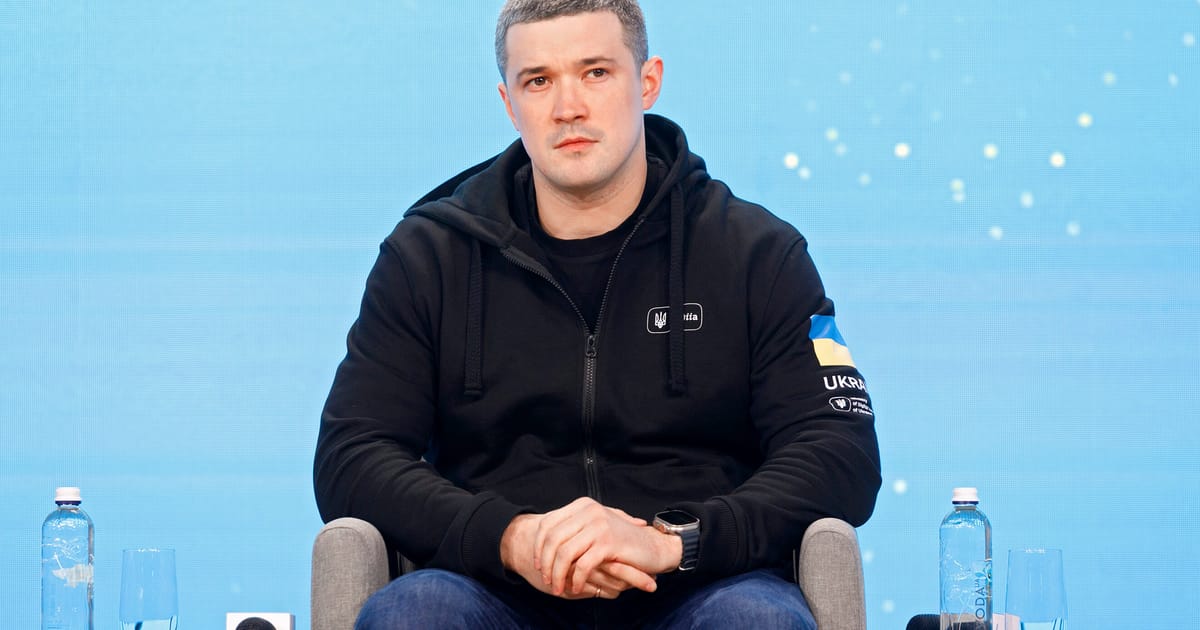
To wit: the Ukrainian army has added game mechanics into drone warfare, and they’ve done it well. I won’t go in depth on a critique of their approach, but I will say that this isn’t the same old same old “slap a point system and leaderboard on it and call it a game.” It does have both of these things, but there are some important subtleties in how they’ve been intentional about creating multiple different reward systems that buff both extrinsic and intrinsic motivations. It seems well thought out, and it has apparently been effective - at least in the short term.
Sidenote: this development feels totally unsurprising because of the nature of drone warfare. Even without game dynamics, it is already so close to being a game.
What I’ve been thinking through since reading this is 2 questions:
- is this a game? The answer is an unequivocal yes.
- is this play? This feels more subjective, but I have to say that my answer is no.
A year ago, if you had asked me for a quick response to the question “are games play?” I would have said yes.
But here we are.
My thinking has changed quite a lot, so I want to flesh my thoughts out a little bit more: games can be a container for play, a way of creating a structure and boundaries around play, a way of signifying an environment for playfulness. Games can adopt elements of play and playfulness by creating containers that reduce the risks for curiosity, exploration, and experimentation. Games absolutely can be play, but games are not always play.
The core differentiator is that I believe the core activity around which play is organized has to be frivolous.
Of course, this is a spectrum - some things very clearly fall at one end of the spectrum, and some at the other…but there’s also a lot of interesting gray area in the middle. I’m not going to be comprehensive here, but there are certain attributes that I think move something from pure frivolity toward something more serious.
On the pure frivolity end of the spectrum is the most unstructured childlike play. If you set a bunch of 4-year-olds loose in an empty field with no toys or any other materials, they’re still going to start chasing each other, finding sticks & scratching in the dirt, picking flowers & grass and blowing it on each other, and so forth. Their minds will wander, their curiosity will be ignited, their imaginations will find something to feast on. It is all fundamentally unserious, but it is fun[7] . The introduction of some structure - when chasing turns into a game of tag with specific rules, when they scratch a hop scotch board into the dirt - reduces the level of pure frivolity but still remains firmly in the realm of play and still on the pretty frivolous end of the spectrum.
Running to the other end, the example above of the Ukrainian drone units and really everything around the world of wargaming sits squarely on the serious end. The stakes involved are literally life or death, so while there may be game mechanics and dynamics that create a playlike environment, it isn’t play. One step removed from this extreme end of the spectrum are all kinds of “gamified” experiences where the stakes are lower but the correlation from the activity to the real world is basically 1:1.
As a rough way to place things along the spectrum, there are 2 factors that I hold in mind:
- real world fidelity - this is actually 2 things working together: how much is the thing attempting to simulate something in real life, and how close is that simulation to something that the player actually has to do in real life.
- what’s at stake - this is a simple measure of what consequences, both positive and negative, rest on the activity.
Some examples, then, for fun?
- In a year, you may very well be finally playing Grand Theft Auto 6.[8] Where does that sit on the frivolity spectrum? The GTA series has occasioned a lot of hand wringing because it was one of the first to have the player take on the persona of an anti-hero doing bad things in an amoral universe. And yet…I think it’s still more frivolous than not. It does score very high in real life simulation, but for the vast overwhelming majority of players what is being simulated is lightyears away from their lived experience. Similarly, we could probably identify some indirect consequences of playing GTA - critics would say it desensitizes the player[9] and encourages anti-social behavior; lots of players would identify some positive consequences too, like creating a context for bonding with their friends. However you choose to balance those two things, the actual consequences are low.
- If, of course, you’re using the game to plan a robbery in Miami, then that calculation is different. But this is not a thing.
- How about basketball? Real life simulation - it’s low! It’s about bouncing a ball and putting it in a hoop. As far as games go, it’s pretty rudimentary. Correlation to real life…also low. There are broad areas of application, like the cultivation of hand-eye coordination and teamwork, but that’s an indirect correlation. The stakes of the activity are also low. The player may become more physically fit and cultivate those broad skills, but that’s about it. The game in itself is frivolous for the typical amateur player. But I use the word amateur intentionally, because the level of frivolity can flip from one end of the spectrum to the other when professionalization is introduced. For me playing basketball, the game is totally frivolous. For Jalen Brunson, it’s dead serious. It is his actual job, so the game is directly related to what he does in real life. His ability to play the game directly influences his life.
- Related, this story about how coaching is like an addiction was one of the things I read recently that sent me down this line of thinking.

I like that basketball example because it demonstrates how all of these activities is also situated in a specific social context. Chess is mostly frivolous, professional chess is less so, the origin of chess as a form of training military officers on battle strategy much less so. The reason for the activity matters!
What we’re playing
OK...back to the Pokemon.
All 3 of us decided to play the same deck this time around, a deck which had a unique feature that I haven’t experienced before:
- the deck is a lot of fun to play…
- EXCEPT - and this is a huge exception - when it plays a mirror match against someone playing the same deck. Check this footnote if you want to know why[1]
The downside of this decision is that we ended up not testing against each other very much and focusing more on playing online. In terms of preparation, that wasn’t too bad - but I find playing online to be less fun than playing in person.
The deck itself is the Munkidori Froslass deck. What I enjoy most about this deck is the way that it subverts the game[2] . 90% of the time, this deck attacks for only 10-20 HP. Just to give a sense of contrast, the 2 current best decks in the format use primary attackers that hit for 190 and 260 HP respectively[3].
The way this deck stays competitive is by using the abilities of its 2 namesake Pokemon.
- Munkidori’s Adrena-brain ability lets it send up to 30 HP of damage from my side of the board to any Pokemon on my opponent’s side when the Munkidori has a dark energy attached.
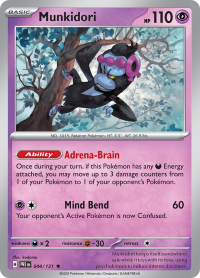
- Froslass’s Freezing Shroud ability does 10 damage to every other Pokemon with an ability in between every turn. This ability stacks, so if there are 2 Froslass in play, then it’s doing 20 damage to every other Pokemon with an ability.
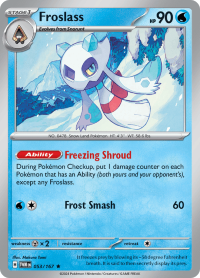
The deck ideally uses 2 Froslass and 3 Munkidori, which means if our opponent has a full bench and all of their Pokemon in play have abilities[4] then we do:
- 120 HP of damage from Freezing Shroud when our turn starts,
- 90 damage from Munkidori during our turn,
- 10-20 damage from our attack,
- another 120 damage from Freezing Shroud when our turn ends,
…for a grand total of 340-350 damage! While that isn’t all concentrated in one place, it’s like slowly turning the screws on our opponent.
This deck is just a big math problem…which might explain why all 3 of us were drawn to it. It lets us choose where we want to target our damage and requires us to plan 2-3 turns ahead in order to choose the right targets.
How we did
Unfortunately, we didn’t do that well with it. The biggest drawback to the deck is that it plays slow. Once those Froslasses are setup, every time the turn changes from one player to another both players have to manually add damage counters to all of their Pokemon with abilities - which can take from 30-60 seconds. It means that we often use the maximum amount of time. When I dropped after 5 rounds I had lost 2 and drawn 3[5]. Every one of those matches would have been winnable with 5-10 minutes more time. Tommy ran into the same problem and dropped out after 6 rounds when it became clear that they wouldn’t be able to finish high enough to score any points. Nate fared a little bit better in the juniors competition, but still didn’t advance to the second day of play or score any points.
On the other hand, having a home tournament meant that we could finally unload all of our extra playmats. Every tournament we play, we each get a new playmat. Over the course of 3 years of tournaments, we had accumulated nearly 30 playmats and only ever used maybe 5 of them? Because they weren’t playing on the second day, Tommy and Nate brought all of the extra playmats to the venue and found collectors who were keen to buy. They cleared nearly €400. There’s more than 1 way to win…
So…where do we go from here?
The season is over for us, so there won’t be any more tournament editions until at least September…but I do want to do a bit of a wrap up of the season next month, both from a Pokemon perspective and as a way to start synthesizing my own thinking about the play[10]. Look out for that next month, and if you want the depth cuts you should join Nerd Notes. One additional email a month with the stuff that’s too nerdy for the gen pop[11].
- The main attacker this deck uses, especially in the early game is a little 30HP Pokemon called Budew. Budew does 10HP of damage but it also prevents the other player from using items on their next turn…so, in this matchup both players are attacking with Budew and doing little chip damage. Both players are trying to get as many Munkidoris setup as they can before the other player sets up a Froslass, neither player wants to setup the Froslass, and both players know that if they both setup 2 Froslass then chaos ensues, but someone needs to setup a Froslass at some point or else the match never really goes anywhere. It is tedious and unpleasant.
- yes, this is a common theme for me.
- For any Gardevoir purists reading this, I have simplified and made Gardy the primary attacker for the sake of this illustration. Yes, I’m aware of Scream Tail and Drifloon. The point stands either way.
- not common, but possible
- In my 3rd round, I ran into the dreaded mirror. At the end of the first turn when it was clear what we were both playing and how unpleasant the match would be, I immediately offered a draw and the other player immediately accepted. We played out the game just for “fun,” but the only fun way to play the matchup is knowing that there’s nothing at stake.
- ok, fine, Tiktok video that I used to find a news story
- for some amount of time
- I won't be. No judgment, I just never got into the GTA series that much.
- This claim is at least questionable.
- which also buys me some time to decide if I’m ready to conclude this series
- and a pretty nice sweatshirt if you get the annual subscription



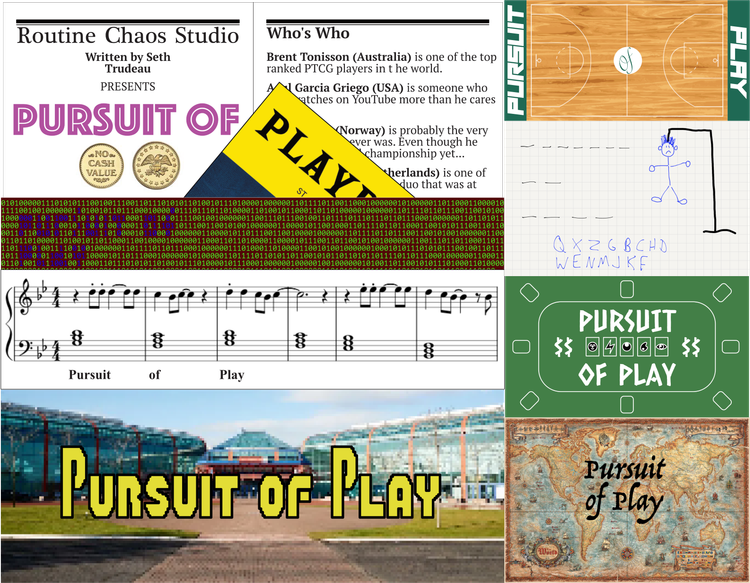

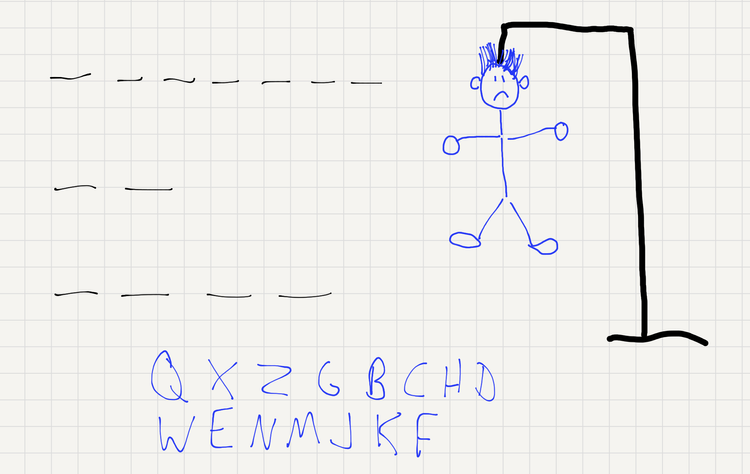
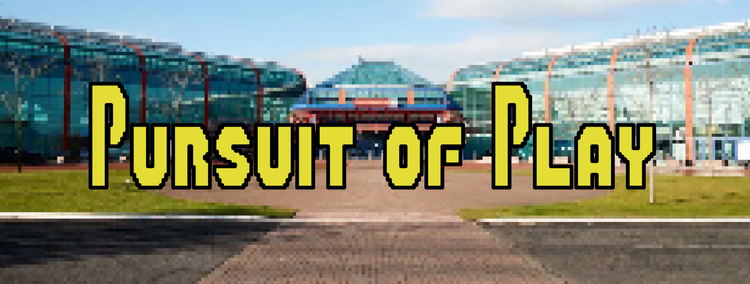
Member discussion